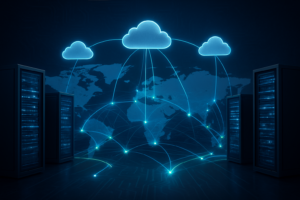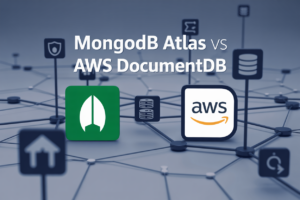Ever tried explaining to your grandmother why her Netflix isn’t working? It’s somewhere between “the internet is down” and a 20-minute lecture on TCP/IP protocols that makes her eyes glaze over. That’s exactly why the OSI Model matters to anyone working in tech.
The OSI Model is like the anatomy chart of computer networking—break it down, and suddenly everything makes sense. Whether you’re troubleshooting connection issues or designing network infrastructure, understanding the OSI Model gives you x-ray vision into how data actually moves from one device to another.
By the end of this post, you’ll not only understand each of the seven layers but also be able to explain them using real-world examples that even your non-technical friends will get. But first, let’s address the question that’s probably nagging at you: why does a theoretical model from the 1980s still matter in today’s cloud-based world?
The Basics of OSI Model and Its Importance in Networking
What the OSI Model Is and Why It Was Created
The OSI (Open Systems Interconnection) model is basically networking’s blueprint, created in 1984 to solve a huge headache – different vendors building systems that couldn’t talk to each other. Think of it as the universal translator that finally got all these tech systems speaking the same language through seven distinct layers. Before OSI, networking was the Wild West.
Layer by Layer: Understanding Each Level of the OSI Model
Layer by Layer: Understanding Each Level of the OSI Model
Physical Layer: Where Data Becomes Electrical Signals
Think of the Physical Layer as the digital delivery person of your network. It’s where your data gets turned into actual signals – electrical pulses in copper wires, light in fiber optic cables, or radio waves for WiFi. When you send that cat video to your friend, this layer handles the raw transmission, determining things like voltage levels, cable types, and how bits physically move from one device to another.
Data Link Layer: Establishing Reliable Point-to-Point Connections
The Data Link Layer is like a traffic cop for your data, making sure packets travel correctly between two directly connected devices. This layer splits data into frames, adds physical addresses (MAC addresses), and performs error detection. Your Ethernet connection works here, ensuring your Netflix stream doesn’t get corrupted between your router and laptop. When frame errors happen, this layer says “nope, send that again” to keep your connection solid.
Network Layer: Routing Data Between Networks
The Network Layer is basically the GPS of the internet. It figures out the best path for your data to travel across multiple networks to reach its destination. This is where IP addresses live and where routers make their magic happen. When you video chat with someone across the country, this layer determines which series of networks your data packets should hop through to reach them with minimal delay, handling logical addressing and routing decisions along the way.
Transport Layer: Ensuring Complete Data Transfer
The Transport Layer is like a package tracking service for your data. It makes sure all your information arrives completely and in the right order. TCP (for reliability) and UDP (for speed) protocols operate here. When you’re downloading a file, TCP ensures every byte arrives correctly, while UDP might be used for streaming where occasional lost packets are better than delays. This layer handles end-to-end connections, segmentation, and flow control to prevent network congestion.
Session Layer: Managing Communication Sessions
The Session Layer works like a phone call operator, setting up, maintaining, and ending conversations between applications. It establishes, manages, and terminates the connections called “sessions” between local and remote applications. When you log into your online banking, this layer helps maintain that secure connection throughout your session, handling authentication and reconnection if something briefly interrupts your connection.
The Upper Layers of the OSI Model Simplified
Presentation Layer: Making Data Readable Across Systems
Ever tried opening a foreign file and seeing gibberish? That’s where the presentation layer saves the day. It handles translation, encryption, and compression—ensuring your vacation photos look the same whether viewed on your iPhone or your friend’s Android. Think of it as the universal translator in your digital universe.
Application Layer: Where Users Interact with the Network
This is networking’s front door—the only layer users actually see and touch. When you check email, browse websites, or send messages, you’re dancing with the application layer. It’s home to familiar protocols like HTTP, SMTP, and FTP that power your daily digital interactions.
How Upper Layers Work Together to Deliver a Seamless Experience
The magic happens when these top layers collaborate. You click “send email,” and the application layer passes your message to the presentation layer, which formats it properly before sending it downward. This teamwork is why you never have to think about how your vacation photos reach Grandma—they just do.
Real-World Examples of the OSI Model in Action
Real-World Examples of the OSI Model in Action
A. Sending an Email: Tracing the Journey Through All 7 Layers
Ever wonder what happens when you hit “send” on that urgent email? Your message transforms from readable text to electrical signals and back again. Starting at the Application layer where your email client operates, your message gets encrypted at the Presentation layer, managed by the Session layer, packaged into segments by Transport, addressed by Network, framed by Data Link, and finally transmitted as bits through physical cables or wireless signals. Pretty wild for something that takes milliseconds!
B. Streaming a Video: How Data Flows Through the OSI Layers
Binging your favorite show involves an intricate dance through the OSI model. The Application layer handles your streaming service’s interface. The Presentation layer compresses video using codecs like H.264. Session layer maintains your continuous streaming connection. Transport ensures smooth playback with TCP/UDP protocols. Network routes data packets across the internet. Data Link handles error correction, while the Physical layer transmits the actual signals through fiber optics, satellites, or your home WiFi. All this happens seamlessly while you’re just chilling on your couch!
C. Online Shopping: The OSI Model Securing Your Transaction
That impulse buy at midnight? Totally protected by the OSI model working behind the scenes. At the Application layer, your browser displays the shopping interface. The Presentation layer encrypts your credit card data with HTTPS. The Session layer maintains your shopping cart between pages. Transport ensures your payment details arrive intact. Network routes your transaction through secure pathways. Data Link verifies packet integrity, while the Physical layer transmits everything through your internet connection. This seven-layer protection is why you can shop in your pajamas without worry!
D. Video Conferencing: Real-Time Communication Across the Layers
Video calls aren’t just convenient—they’re engineering marvels running through all OSI layers. The Application layer provides your Zoom or Teams interface. Presentation compresses audio/video streams for efficient transmission. Session manages your meeting connection and coordinates participants. Transport prioritizes real-time data with UDP. Network finds the fastest routes between participants. Data Link handles error detection, while Physical transmits signals through cellular networks, fiber, or Wi-Fi. Next time someone freezes mid-sentence, you’ll know which layer to blame!
Troubleshooting Network Issues Using the OSI Model
Troubleshooting Network Issues Using the OSI Model
A. Bottom-Up vs. Top-Down Approach to Network Diagnostics
Network pros debate this constantly – start from Physical (bottom-up) or Application layer (top-down)? Bottom-up makes sense when you suspect hardware issues. Check cables first, then move upward. Top-down works better for software problems – start with the application, then dig deeper only if needed. Your choice depends on what symptoms you’re seeing.
B. Identifying Common Problems at Each Layer
Physical layer issues practically scream at you – disconnected cables, damaged hardware, or port failures. These problems stop everything dead in its tracks.
Data Link problems show up as frame errors, MAC address conflicts, or spanning tree loops. Your switch logs will light up like a Christmas tree.
Network layer troubles manifest as IP addressing errors, routing loops, or firewall blockages. Packets either vanish or take bizarre paths.
Transport layer hiccups appear as connection timeouts, port blockages, or TCP handshake failures. Applications seem sluggish or unresponsive.
Session layer issues emerge when connections drop unexpectedly or applications can’t maintain state between interactions.
Presentation layer problems pop up when systems can’t agree on data formats – like encoding conflicts or compression issues.
Application layer complications happen with protocol mismatches, API failures, or software bugs that prevent proper service function.
C. Tools That Help Diagnose Issues at Specific Layers
| Layer | Tools | What They Reveal |
|---|---|---|
| Physical | Cable testers, multimeters | Cable integrity, signal quality |
| Data Link | Wireshark, packet analyzers | Frame errors, MAC issues |
| Network | Ping, traceroute, route print | Path issues, IP conflicts |
| Transport | Netstat, port scanners | Open ports, connection states |
| Session | Session analyzers, logs | Session establishment problems |
| Presentation | Protocol analyzers | Data format inconsistencies |
| Application | Application logs, API testers | Software errors, protocol issues |
D. Real Case Studies: Solving Network Problems with OSI Knowledge
Case 1: The Mysterious Disconnects
A manufacturing plant reported random network drops every few hours. Initial guesses pointed to application issues, but working up from the Physical layer revealed power fluctuations affecting switches. Adding UPS systems solved it instantly.
Case 2: The Bandwidth Bottleneck
An office complained about slow file transfers despite a recent network upgrade. Instead of blaming applications, transport layer analysis showed TCP window size limitations. Adjusting these parameters boosted performance by 300% without hardware changes.
Case 3: The Remote Access Puzzle
Remote workers couldn’t connect to the VPN after a server migration. Application logs showed successful authentication but no connection. The culprit? A presentation layer issue where the new server used different encryption protocols. Standardizing encryption settings restored access immediately.
The OSI Model serves as the backbone of modern networking, providing a structured approach to understanding complex communication systems. From the physical hardware components in Layer 1 to the application interfaces we interact with daily in Layer 7, each level plays a crucial role in ensuring seamless data transmission. By breaking down network operations into distinct layers, IT professionals can more effectively diagnose issues, implement solutions, and design robust networks that meet today’s demanding connectivity requirements.
Whether you’re troubleshooting why your email isn’t sending, understanding how your voice travels during a VoIP call, or simply curious about what happens when you click a link, the OSI Model provides the framework to comprehend these processes. As networks continue to evolve with emerging technologies like IoT and 5G, having a solid grasp of these fundamental networking principles will remain invaluable for both technical professionals and anyone looking to better understand the digital world around them.




















